Canon L-series refresh: Minor updates arrive to 70-200mm f/4L IS II, 70-200mm f/2.8L IS III lenses
posted Thursday, June 7, 2018 at 12:01 AM EDT
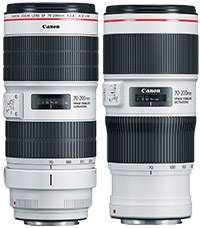
The 70-200mm zoom lens is an all-time classic. It's a highly versatile zoom that's ideal for sports and wildlife subjects as well as portraiture and even landscapes. In Canon's camp, their L-series 70-200mm lenses have proven extremely popular with a wide range of enthusiast- and professional-level photographers.
Canon's EF 70-200mm zoom lenses have also come in a variety of flavors over the years, with original non-stabilized versions of the f/2.8 and f/4 styles dating back to 1995 and 1999, respectively. The next iteration of the 70-200mm f/4L IS lens debuted in 2006, while the 70-200mm f/2.8L IS II model arrived not too long ago in 2010. Nevertheless, Canon's ready to refresh both of these popular telephoto zooms with more modern features, updated technology and, of course, a fresh coat of that new whiter L-series paint.
Here's the rundown of the new features:
Canon 70-200mm f/4L IS II USM
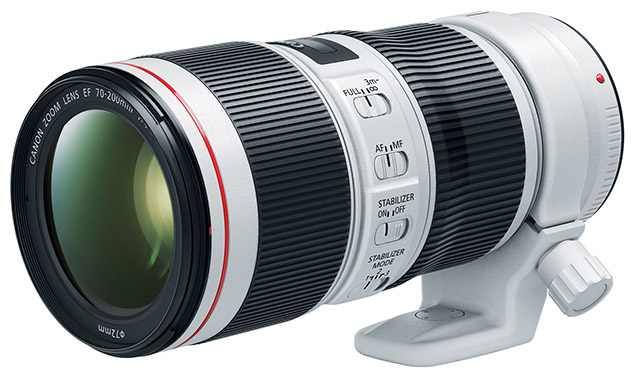
The stabilized f/4L model gains more updates and new features than its larger f/2.8L III companion, so let's start there.
In general, the 70-200mm f/4L IS lens is a popular choice for both enthusiasts and professionals for a number of reasons: it's smaller, lighter and more affordable than the f/2.8 sibling. If you're not shooting in low-light that often, the size and weight savings by going the f/4 route can be an important deciding factor.
The new 70-200mm f/4L IS II gains a number of improvements over its 2006-era predecessor. For starters, the image stabilizer gets a performance boost, going from a 4-stop-rated IS system to a 5-stop IS system. Furthermore, Canon had reduced the operational noise of the IS system, which is great news for videographers or anyone else shooting in sound-sensitive environments. Plus, they've also added IS Mode 3, which has been available on a number high-end L-series telephoto lenses. This mode helps you more accurately track subjects during sports and action-shooting scenarios by not stabilizing the scene in the viewfinder while you're half-pressing the shutter and instead only activating IS right as you fully press the shutter button.
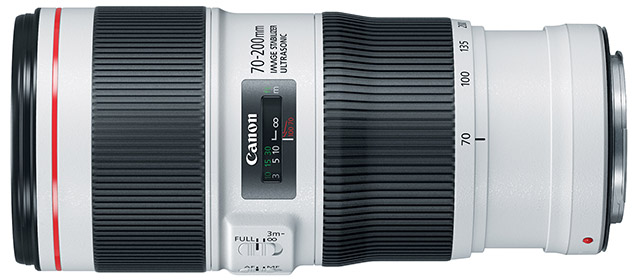
For those shooting portraits, nature, or any other close-up details, the new f/4L IS II has improved close-focusing distance, shortened from 1.2 meters (3.9ft.) to 1 meter (3.3ft).
According to Canon, the overall image quality remains at the same high-quality level as the previous model, but they've re-worked a few of the optical features, including the layout of the elements as well as re-doing the Super Spectra lens coatings for improved resistance to flare and ghosting. The lens, however, still features 20 total elements situated into 15 groupings and includes a single fluorite element and two UD (ultra-low dispersion) elements to help combat against CA and fringing and boost clarity.
The front and back elements now feature fluorine coatings, which help with cleaning and protect against smudges and fingerprints. As before, the 70-200mm f/4L IS II remains ruggedly built with comprehensive weather-sealing, including a gasket around the lens mount.
Other changes include a circular 9-bladed aperture diaphragm (up from 8 blades in the earlier model), larger filter diameter (now 72mm rather than 67mm) and an ever-so-slight increase in weight (880g vs. 760g).
The Canon 70-200mm f/4L IS II is set to go on sale in late June for an estimated retail price of $1,299 (a minor increase compared to the $1,199 MSRP of the original).
Canon 70-200mm f/2.8L IS III USM
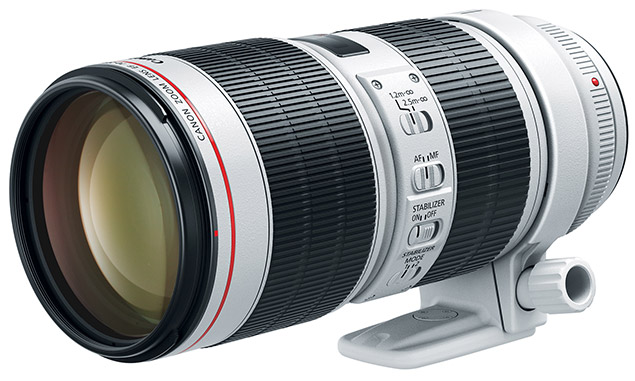
By and large, the Mark III model of Canon's venerable 70-200mm f/2.8L IS lens is very minor refresh compared to the previous Mark II version. The optics were significantly upgraded in the 70-200mm Mark II update, and the impressive image quality characteristics are said to remain unchanged in this new version.
The main upgrade is the addition of Air Sphere Coating Technology, which first appeared on the 100-400mm f/4.5-5.6L IS II lens. This multi-layer coating technology combines traditional vapor-deposited coatings with an ultra-low refractive index layer on lens elements' outermost surface. Together, this helps suppress reflections of light to further reduce ghosting and flare. The lens also features re-worked Super Spectra Coatings similar to the new f/4L II lens.
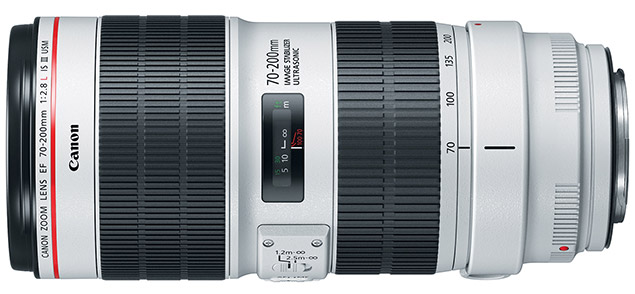
As before, the 70-200mm f/2.8L IS III offers up to four stops of optical image stabilization, features fluorine coatings on the front and rear elements for easier cleaning, durable weather-sealed construction, uses the same optical design (23 elements, 19 groups including one fluorite and five UD elements), offers a minimum focus distance of 1.2m (3.9ft), and uses a circular 8-bladed aperture diaphragm. Unlike the 70-200mm f/4L IS II, the f/2.8L IS III lens maintains the same close-focusing distance (1.2m/3.94ft), the 77mm filter diameter, and physical size and shape. The weight, however, is ever-so-slightly lower in this new version, at 1440g (3.17lbs) compared to 1490g (3.28lbs).
The Canon 70-200mm f/2.8L IS III is scheduled to go on sale in August for an estimated retail price of $2,099 (the same original MSRP as the Mark II lens).